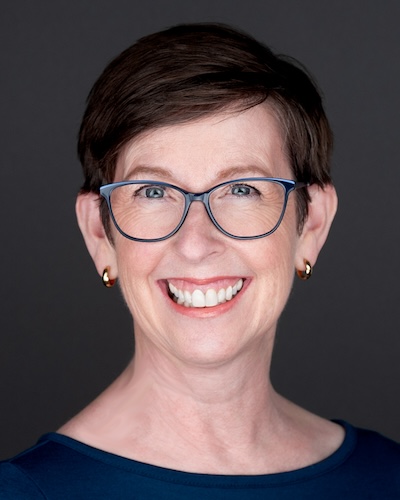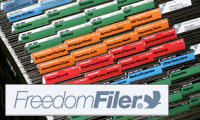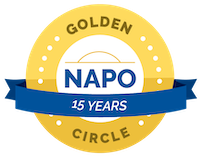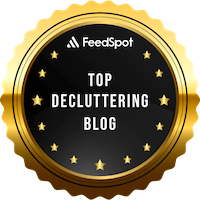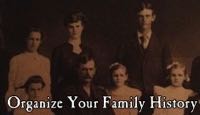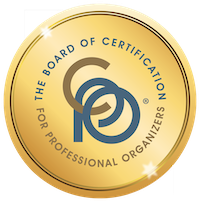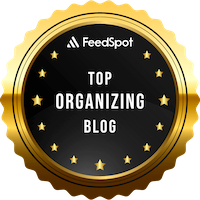New Secrets of Getting Organized magazine
I was delighted to receive in the mail over the weekend the Summer 2019 issue of Secrets of Getting Organized magazine from Better Homes and Gardens Special Interest Publications. I was a bit puzzled because I didn’t remember doing an email interview recently, but my memory isn’t the greatest.
So I opened to the back, saw my picture in the list of contributors, and thumbed through to see what I was quoted about. It seemed very familiar and one of the articles I remembered from a couple of years ago. Very mysterious. And then I took a closer look at the cover. There, down by the bar code, it says, “Back by Popular Demand: Second Printing of Secrets of Getting Organized Early Spring 2018.”
Mystery solved.
Here’s the cover, along with a couple other Janine-related snaps. (I always get a thrill when I see myself included on the contributors’ page!) I’m quoted in three of the articles (Stop Paper Pileups, Goal: Conquer Media Room Clutter, and a kitchen-organizing article called In the Zone).
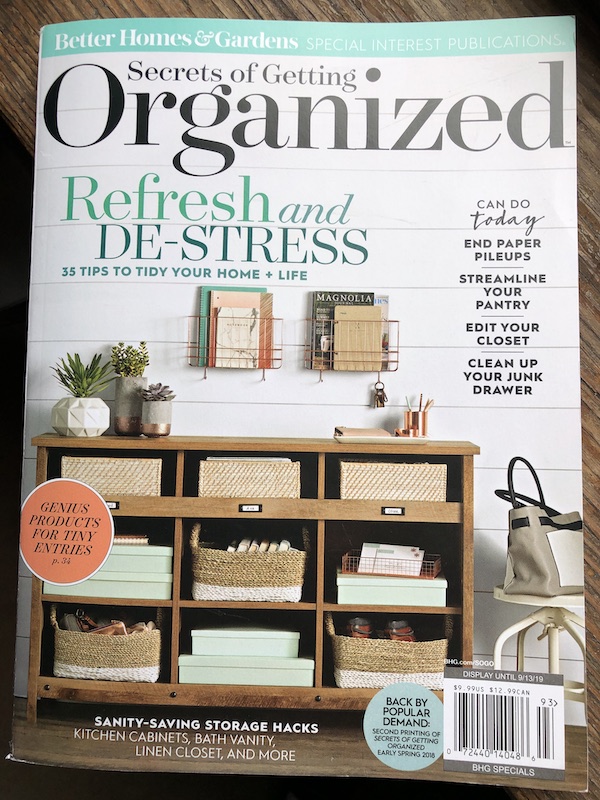
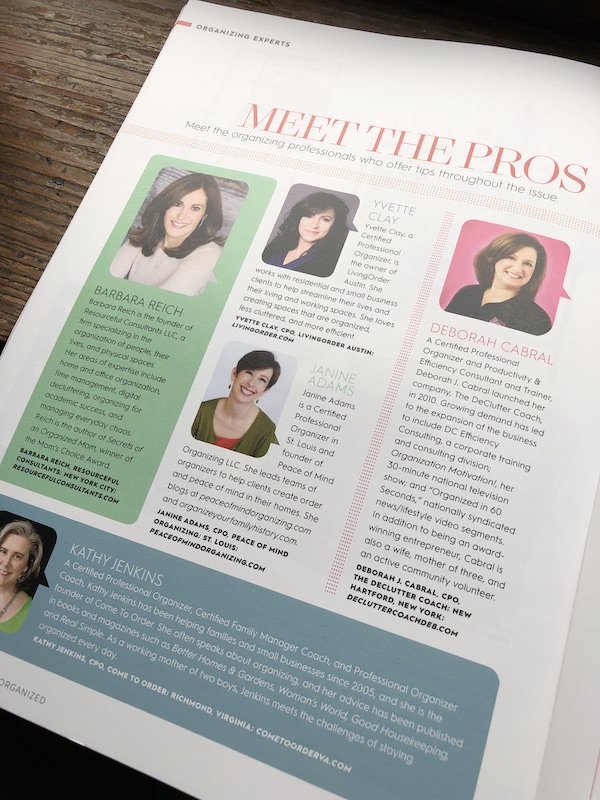
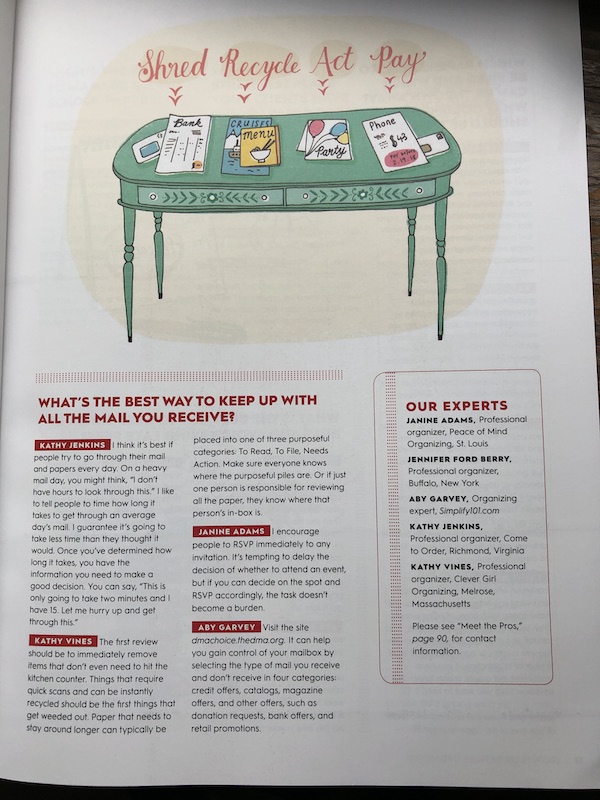
It’s a particularly good issue, which I urge you to take a look at, if you have the opportunity. You can order it online at the link above, or look for it in newsstands and book stores nationwide. While the interior is identical, the cover of the Summer 2019 issue is different from the Spring 2018 cover (which you can see in the post I wrote about it at the time). I wouldn’t want you to inadvertently buy it if you already have it!
I love these magazines. They’re free of advertising and just plain eye candy. And, because the editors reach out to professional organizers for the ideas and tips in the stories, the content is terrific!
A calm summer thought
I’m a big fan of Yogi Soothing Caramel Bedtime Tea. (Be forewarned: It’s not everyone’s cup of tea, but I think it’s delicious.) One of the things I love about it, in addition to its flavor and its soothing nature, is the words of wisdom on each teabag. I haven’t had any other types of Yogi tea, but I assume all their teas have wise tea tags.
This one caught my eye:
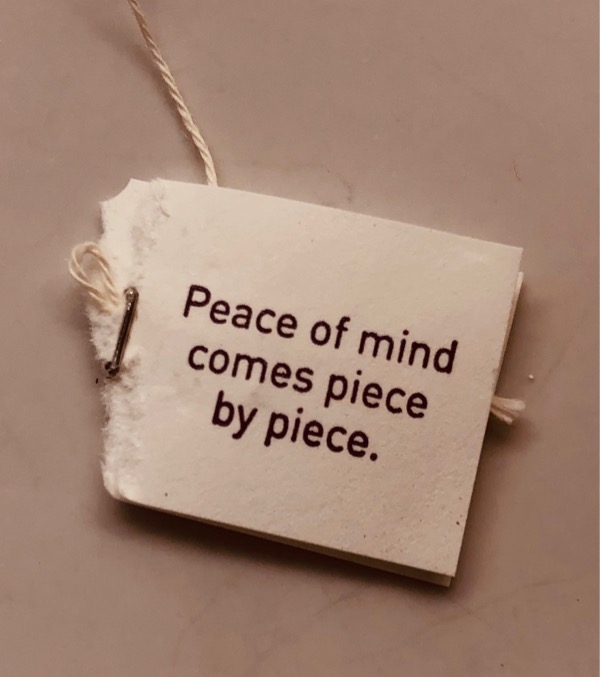
Being owner of Peace of Mind Organizing, I naturally love any mention of peace of mind. (It’s so important!) And of course, I’m all about breaking things down into small steps and making incremental progress toward your goal. So the message on this tea tag really resonated with me. I hope it touches you too.
Worth repeating: The key to finishing my big knitting project
I was taught to knit by my mother and grandmother when I was a child. But I put down the needles in college and didn’t pick them up for 20 years. One of the first projects I did after re-learning to knit was Barbara Walker’s Learn to Knit Afghan. It took me two years to finish knitting the 63 squares of the afghan. A year later, with the help of friends, I figured out a pretty layout for the squares and seamed them together. (I used only 48 of the 63 squares.) I started a knitting a binding around the edge. And that’s where the project stalled. In 2016, I finally finished that afghan and I am so darned proud of it. Today, I’m re-running most of the post I wrote about it at the moment of completion in 2016.
I bet I hadn’t touched the afghan between 2010 and 2016. In 2010, I placed it in a bag and put it in the closet because (a) knitting the applied i-cord binding was unbearably tedious and (b) I didn’t even know what I was going to do with the afghan when I was finished.
All that changed in October (2016). My knitting group now meets at the City Sewing Room a wonderful place for people who sew to use sewing machines (and other sewing accoutrements) and get advice. You can also have alterations and special projects sewn for you there. On October 19 when I was there, I saw that Anne, the owner, was sewing a flannel backing to a knitted baby blanket. My antennae immediately went up.
With the encouragement of my crafty friends who were there—and who helped me lay the afghan out way back in 2009—I talked with Anne about the possibility of her sewing a flannel backing on my much larger afghan. She said that wouldn’t be a problem. When I lamented that I still needed to finish knitting the binding, she mentioned that she could sew a flannel binding on. Sold! In no time, I ripped out the binding I’d already knitted. It felt great.
Two weeks later, I’d purchased and washed flannel and brought it to Anne, along with the clean and blocked afghan. I now have a beautiful, cozy afghan I can sleep under in bed or lie under on the couch. Last evening I used it as a lap blanket.
Here are a couple of photos. It feels like a miracle.
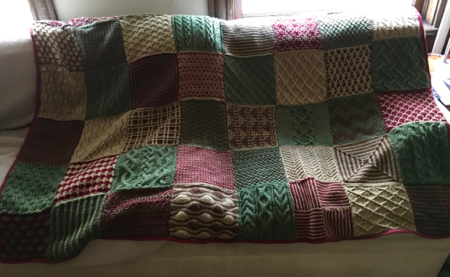
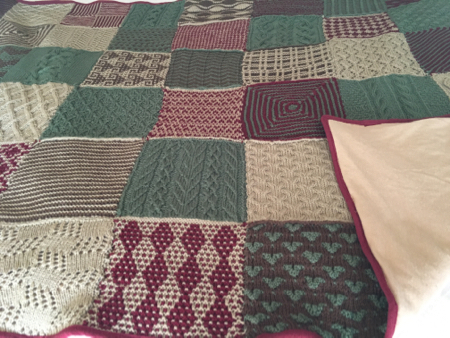
I got to thinking about how this happened and realized the key:
Impossible projects become possible when you enlist the help of experts.
For me, binding that afghan and then figuring out how to make it useful (it’s wool and too itchy to use without some sort of backing) was an insurmountable hurdle. For Anne, it was no big deal, just a few hours work. Just like laying out the afghan felt impossible to me but was easy peasy for my crafty friends.
The same is true for clutter or all sorts of other projects. My team and I come in and, in a few hours, help clients transform spaces in their home that had felt impossible to tackle on their own.
I am so happy to have this project completed and so glad I found an expert to help me. And I’m very grateful to Anne and my craft sisters for helping me make it happen!
A year of good enough
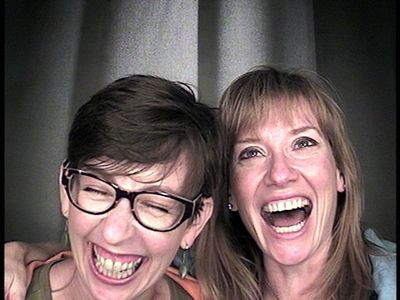
Tomorrow marks the one-year anniversary of Getting to Good Enough, the podcast I co-host with my good friend and life coach, Shannon Wilkinson. I can’t believe it’s been a year already!
The idea of the podcast, which is all about letting go of perfectionism so you can do more of what you love, is all Shannon’s. She approached me in April last year, suggesting we start a podcast together. I didn’t know the amount of work that would entail, but I thought it sounded like fun. For several years, Shannon and I had had a weekly accountability phone call together (which sometimes included other people) but for a variety of reasons that had fallen by the wayside. Podcasting seemed like a great excuse for us to talk every week.
After a brief discussion, we decided to go for it. And we made a solemn vow to one another: If making the podcast stopped being fun for either of us, we’d stop doing it.
I’m happy to report it’s still fun! Shannon and I record weekly. She does the (minimal) editing and I do the show notes and publication. We keep a list of topics and usually decide at the end of a recording session what we’ll record next, though sometimes we don’t decide until sit down to record. We don’t spend time prepping, beyond a brief conversation just prior to recording. We really have let it be easy.
We’ve never missed a week, though we did intentionally re-run the premier episode (Done is Better than Perfect ) over the holidays. We’ve produced one product for purchase, Good Enough Goal Setting. (Oh, and a mug.)
It’s been really interesting looking at life through the filter of good enough vs perfect. As we say at the top of the podcast, I’m naturally good at good enough (I’m really not a perfectionist at heart), but I’ve discovered that in some areas of my life I do have some perfectionistic tendencies. Now that I’m keeping an eye out for them, they pop out at me and I can usually shift to a good enough mentality. (Shannon and I discussed how a year of podcasting on this topic has affected us in Episode 52: A Year of Good Enough.)
We’ve been delighted to receive some great feedback on how the podcast has helped people. (Check out the comment on this Instagram post from @bn.mhcn. It made our hearts sing!)
Getting to Good Enough has been more popular than we ever imagined: In less than a year, there have been more than 60,000 downloads. (What?!) Those downloads have come from every continent except Antarctica. If you know anyone in anyone in Antarctica, please tell him or her about the podcast and ask for a download!
Shannon and I have even applied to speak at a podcasters’ conference! Fingers crossed.
If you haven’t listened to Getting to Good Enough, I encourage you to give it a try. You can subscribe at Apple podcasts, Google Podcasts or Spotify. You can also listen to the podcast, and read show notes, at our website, Getting to Good Enough. If you listen, please consider rating and reviewing at iTunes. That helps a podcast be found more easily.
If you’ve thought about starting a podcast yourself, keep an eye out here because I’m working on a blog post about how we used a “good enough” mentality to start the podcast with minimal effort and angst. We were able to go from idea to publishing our first three (fully realized) episodes in under two months. It doesn’t have to be hard.
Nine ways I use Trello
I’ve been noodling around with Trello for about a year now. I’m still using Evernote for keeping track of lots and lots of things but I’ve always found its user interface to be something to be tolerated, not embraced. Trello is quite the opposite—it’s lovely and provides tools to make it even lovelier.
In July last year, in a post called Using Trello for task management, I detailed some of the reasons I enjoy Trello. Today, I want to talk about how I use it.
Here’s a screen shot of the Trello board I created to plan my upcoming genealogy research trip to Kentucky. Each board has lists (columns) and each list contains individual notes. There are tools within the notes, like checklists and the ability to attach documents and photos, that make them very flexible and useful. You can also easily drag around notes and lists.
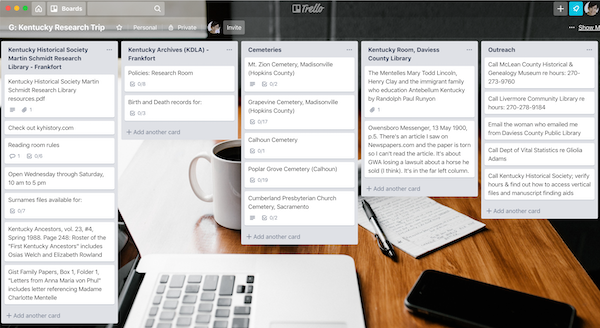
That Trello board is one of many I’ve created. Here are the nine boards I use most frequently:
- Various task-management boards. One thing I love about Trello is that I can create a variety of task management boards based on my needs and my mood. I have detailed ones that allow me to plan by the hour, some by category, a kanban board, and at least one with a bit a built-in fun. My current favorite is Chinese menu – humane version (I created it after writing this blog post about a humane task list.)
Here’s a peek at that one. (I don’t want to include screen shots of all of them, so these will have to do.)
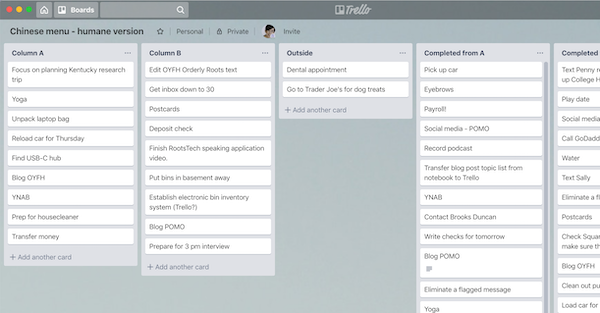
- Blog post planner. I drop ideas into this board, with a list for each blog and lists for completed posts. When I’m inspired, I use it to plan posts for the upcoming week or two. I also use it as an area to jot down content for those posts. I used that board to plan this post!
- Kentucky research trip planner (pictured above). This is not only helping me plan, but it will be very handy when I’m on the trip visiting various repositories. I’ll be able to tell at a glance what I’m looking for at each place.
- Recommended organizing products. As a member of the National Association of Productivity and Organizing Professionals, I’m privileged to have access to the wonderful online conversations among members. Often, products are recommended that I’m not familiar with. Trello has provided a great way to keep track of those because I can easily include a photo and it’s easy to access on my phone when I’m with a client. I organize the lists on that board by part of the house the product pertains to (kitchen, bathroom, etc.).
- Client projects. I create a board for most of my team-organizing clients. It’s a spot where I can stash pictures, communications, keep track of team members and also make sure all the tasks in the process are completed. It’s especially helpful when someone else is leading the team. In that case, I share the board with the team members.
- Employee time cards. Each of my two employees has a list in the POMO Admin board where she tracks her time, one card per work session. I consult those cards when doing biweekly payroll. When a card is paid, I move it to a Paid list, so it’s easy to for me to do payroll.
- Annual goals. I created a 19 × 2019 list, as suggested by Gretchen Rubin on her Happier with Gretchen Rubin podcast. Trello is a great place to stash that.
- Sleep tracker. As I’ve entered middle age, sleeping isn’t easy as it once was. In an effort to figure out what is promoting good sleep, I created a sleep tracker Trello board. Each morning when I wake up, I create a card reporting how well I slept, how long I slept, and the factors that might have contributed. (Did I take melatonin? Did I drink wine? Was the room too hot or too cold?) I apply a label (good night, bad night, neither good nor bad). I can tell at a glance how well I’m sleeping and some day I might dig into the data to determine what’s contributing to a good night’s sleep.
- My Kindle library. I’m just starting this project (and will blog about it when done). I have the hardest time keeping track of the books on my Kindle. A couple of years ago, I tried (and failed) to use Evernote for that purpose. Trello just might be the answer. (I’m inspired by my podcast co-host Shannon Wilkinson who’s using Trello for to track the books she’s reading. We talked about it on Episode 52 of Getting to Good Enough and there’s a picture of her board in the show notes.)
Trello is easy to use, flexible, beautiful and free. If you’re itching to switch up how you keep track of stuff, I’d encourage you to check it out!
Worth repeating (again): Regifting
I wrote this post in 2013 and am still enjoying the painting my relative passed on to me. In fact, a couple of years later, another cousin of my mother’s gave me a painting by my grandmother that she had been given and I hung it up with pride. I so enjoy living with these two paintings. If you have unloved items in your home that you can regift to someone who will appreciate them, I urge you to let them go and make someone happy.
I know from working with clients that people have a very difficult time parting with items that were a gift.
When this comes up with clients, I always urge them to ask themselves whether the gift giver would want them to keep an item that they don’t use or love. (Usually the answer is no.) Then I encourage them to give the item to someone else. That someone else could be a stranger (via a charity) or someone they know.
Recently, I met my mother’s first cousin, Penny, for the first time. (We actually met once as kids, but that’s a dim memory.) I was traveling to western Missouri, so I contacted Penny, with whom I’d become reacquainted via email thanks to my genealogy blog. We arranged to spend the day together. (You can read about that fun family reunion on my genealogy blog, Organize Your Family History.)
As we were making the arrangements, Penny offered to regift something to me. She offered me an oil painting that was painted by my grandmother (Penny’s aunt).
To me, this is a perfect example of the power of regifting. Penny is moving and is starting the process of editing her belongings. My parents have my grandmother’s paintings and I imagine I’ll inherit at least one, but this is the first time I’ve been offered one.
Here’s the painting:

"Serenity is the Mood," by Sue Brown
The painting is not exactly my aesthetic. But it was painted my beloved grandmother, whose late-in-life love of painting was a big part of my childhood. I promptly hung it on the wall of one of my home offices. And I cherish it.
If you have items that you don’t cherish or use, but you’re hesitating to let them go because they originally came to you as a gift, please think about happy someone else might be to own that item.
I hereby give you permission to regift!
Creating an anchor on your desk
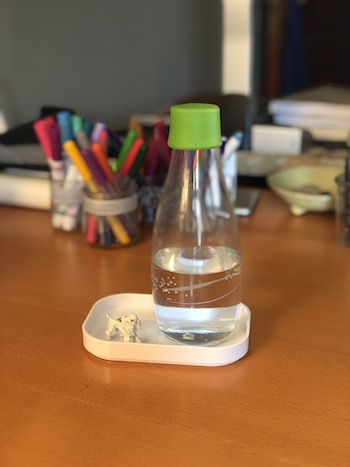
On social media, I saw a link to a New York Times Wirecutter article called Tame Your Desk Clutter With This One Simple Trick. You can bet I clicked on it.
The article, which is definitely worth a read, suggests using small Muji plastic trays to place random small items in to corral them. (That’s the one simple trick.) To be sure, a desk surface can attract small items that can feel hard to keep in check.
In organizing, we call this anchoring. If you put a tray or basket under a more-or-less random pile of stuff, it feels orderly. Think salt-and-pepper shakers and other tabletop paraphernalia. They can feel scattered if unanchored but if a tray is placed underneath, it feels organized.
I found myself wanting to buy one of these little Japanese trays and give the concept a try on my desk, though I don’t have a whole lot of desk clutter (this week, anyway). When I was at the Container Store, I picked up a Compact Plastic Lid/Tray. It’s part of a set of containers, whose lids are sold separately, that come in four sizes. I bought the Extra Small size (5 5/8” × 3 7/8” × 3/4”) though I would have purchased the Small lid (7 3/4” × 5 5/8” × 7/8”) if they’d had any in stock.
I have two little items on my desk that make me smile (a metal poodle, which my husband gave me to represent Bix when getting Bix was my birthday present four years ago, and a little metal disk I found on the street that says “Hello Sunny”). They used to live on my monitor stand, but when I got a new monitor I emptied and moved the stand. So these items were floating free on my desktop. I put them in the little tray, along with my water bottle (also from the Container Store back in the day) and I have to admit the whole thing makes me happy! My water bottle feels less likely to be tipped over and less like clutter. And my little poodle stays visible.
What do you think of this concept? I’m not sure it’s life changing, but it was a fun experiment for me.
Links
- Are you interested in becoming a professional organizer?
- Institute for Challenging Disorganization
- Shannon Wilkinson, life coach
- National Association of Productivity and Organizing Professionals
- Peace of Mind Spending
- Ravelry
- Organize Your Family History
- NAPO St. Louis
- Getting to Good Enough podcast
